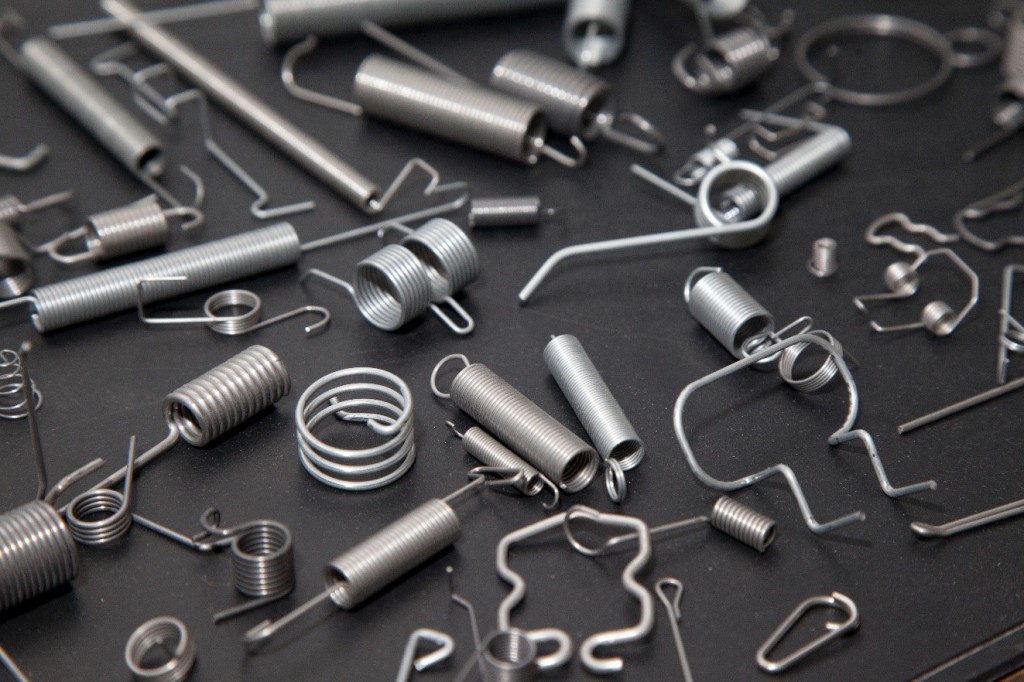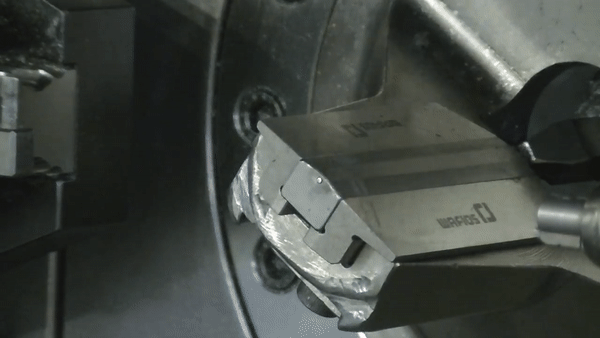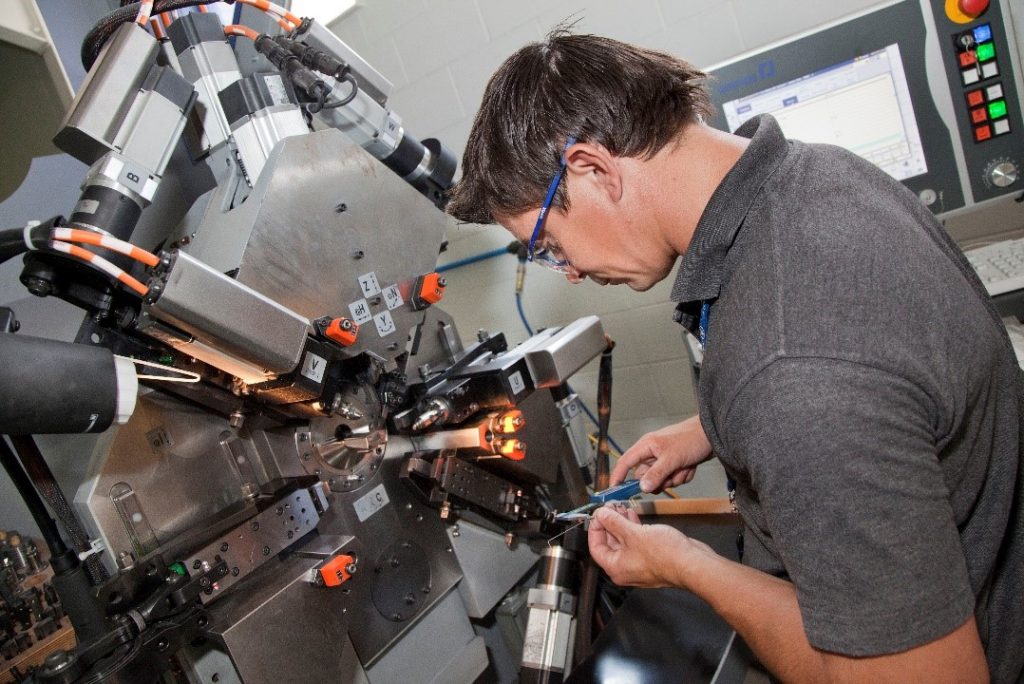Wire forms are an underappreciated, innovative part of manufacturing almost any consumer product, electronics or machinery worldwide. Many of the engineering feats achieved over time would not have been possible without the humble wire form.
From ordinary everyday objects to wire forms on an industrial scale, many modern-day developments would not have been possible without these ingenious inventions. Read on to explore in-depth the various uses and different types of wire forms available here at Airedale Springs.

What Are Wire Forms?
The name is quite literal; they consist of metal wires shaped into different forms based on their intended use. The creation of wire forms involves shaping and bending wire while applying heat, cold, or mechanical force to acquire the required shape.
As experienced wire form manufacturers, we know that the versatility of wire forms makes them highly popular for an infinite number of applications. Wire form designs involve shaping them into a loop, snap, hook, or any other figure required to fulfil their role in the final product. This design, material and finish adaptability makes them highly useful in demanding industries such as medical devices, aerospace structures, electronics, and many more.
Different Types of Wire Form
Wire forms come in many different designs; their shape is only limited by the designer’s imagination and the manufacturer’s capabilities. Custom wire form designs are created to suit almost any purpose, but here are some standard wire forms that are commonly used:
- Hooks: A wire form most people are familiar with, hooks are generally used as a point of connection between two parts or components. The open end of a hook allows another item or component to be connected or suspended by looping the second object around that point.
- Metal clips and clamps: Any metal clip or clamp that uses tension to hold items in place is considered a wire form. These types of wire forms are often shaped like the letter ‘U’ in their basic design, but this shape will usually be altered depending on the intended final use of the wire form. The most recognisable, everyday use for this type of wire form is a paper clip.
- Wire rope: Multiple strands of wires twisted or braided together to create strong cables
- Pins: These cylindrical wire forms are used for fastening or locating objects within complex machinery.
- Wire forms with bends: Very similar to other wire form designs but with the added element of having one or more bends along their length.

Are Springs Wire Forms?
Springs are one of the most commonly recognised and widely used types of wire forms on the market today, and they are a fundamental component in many applications alongside non-spring wire forms. For clarity, we separate wire form springs from our general wire form manufacturing services on our website, as not all wire forms are springs.
The design and material of the spring are dependent on the intended application, and they come in various shapes, such as:
Their most recognisable characteristic is their coiled shape. How the coil of the spring is manipulated defines what type of spring has been created and also dictates its purpose. For example, a compression spring is an open-coil helical wire form that offers great resistance to compressive forces; a garter spring, on the other hand, is a coiled wire form where the ends are connected to form a circle, providing a strong radial force.
Common Uses for Wire Forms
Wire forms are an extremely versatile component found in almost every industry. With an endless range of applications, wire forms are in virtually every area of life, for example:
- The lighting industry uses wire forms to hold light fixtures in place securely.
- In electrical appliances, wire forms act as support mechanisms and are used to hold wires and components in place. Tin-plated copper, bent into clips, is a common wire form in this application.
- Battery contacts, an integral part of many common household items, also use wire forms. This application typically requires a nickel material as plating or base material to perform effectively.
- In medicine, they are designed specifically for use in surgical instruments and devices; simple hooks, pins, and other forms are utilised.

CNC Wire Form Manufacturing at Airedale Springs
At Airedale Springs, our wire form manufacturing is done with advanced Computer Numerical Control (CNC) wire forming machinery.
This reliable combination of computer accuracy and mechanical speed enables us to create wire forms with unparalleled accuracy and precision. By utilising our CNC machines, we efficiently produce both simple and complex wire forms, catering to the unique needs of their customers.
The CNC wire forming process involves specialised machines programmed to precisely bend and shape the wire according to the desired design. These advanced machines are equipped with a range of tools and special tooling to ensure the highest level of precision in the wire forming process. We have invested significantly in the latest CNC coiling and wire forming machines, enabling us to manufacture wire forms in various materials and quantities.
With so many examples listed here, it is clear to see that wire forms can be utilised across many different industries. How could wire forms change your manufacturing process? The possibilities are endless.

Expert Wire Forming at Airedale Springs
We specialise in being a trusted partner for clients who need reliable results from their wire form manufacturers. Our expertise extends to every possible wire form design, from small springs for electronics to large bespoke wire form fittings.
We have assisted many of our customers in solving their complex design issues, and our engineers have developed innovative solutions leading to significant cost savings on tooling, manufacture, assembly costs and materials usage.
Contact us today to discover how our processes will efficiently fulfil your wire form needs.

